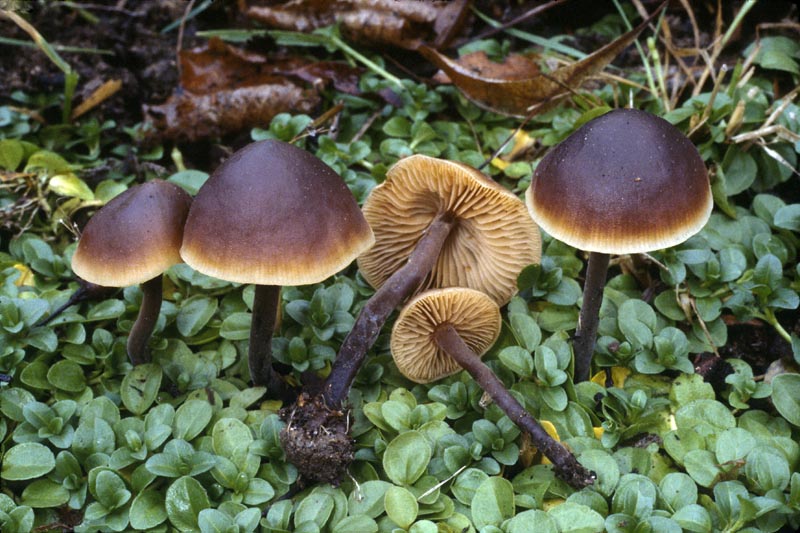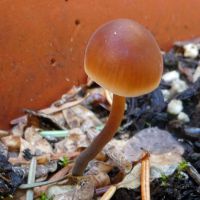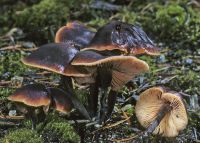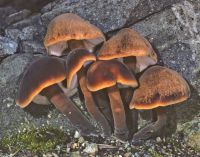Distribution: Usually found in nutrient-rich soils among herbaceous plants in gardens and parks rather than in forests (although it can occur there, usually along trailsides).
Conservation Status: Not of concern
Macrocystidia cucumis has spores with a reddish brown tint and, in the field, might be confused with entolomas. However, the overall coloration and its smooth ellipsoid spores are very different. The reddish brown cap with a pale yellowish edge and blackish to red-brown velvety stipe are distinctive, as is the strong cucmber or fishy odor. Microscopically, the presence of large lance-shaped cystidia on the cap, stipe, and edge and faces of the gills clinches the identification and accounts for the genus name.
PNW Herbaria: Specimen records of Macrocystidia cucumis in the Consortium of Pacific Northwest Herbaria database
CalPhotos: Macrocystidia cucumis photos







